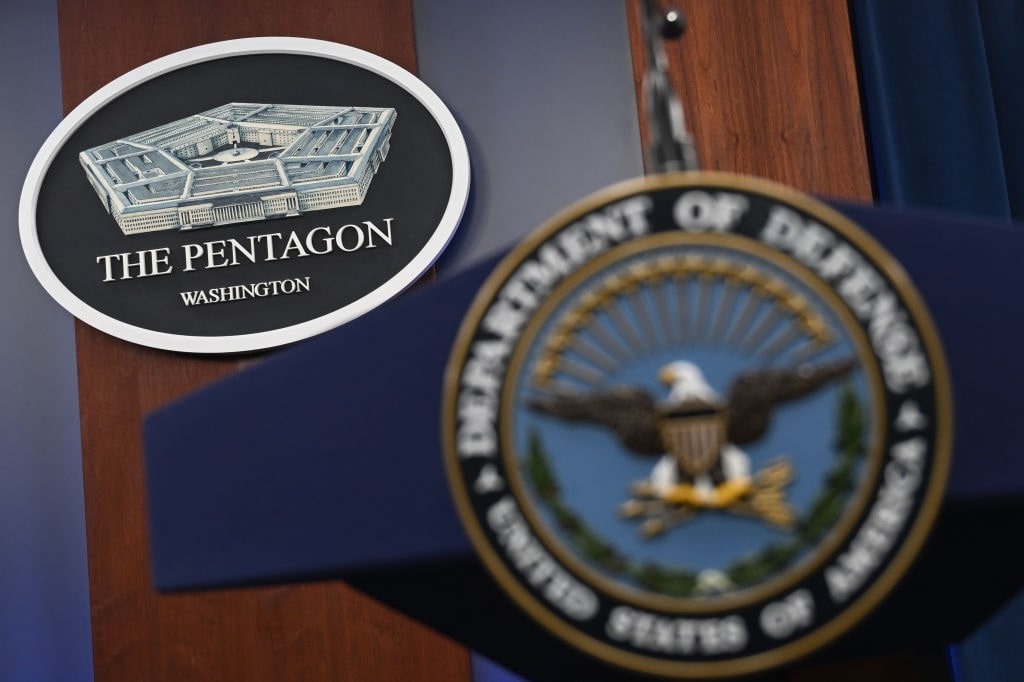On March 11, the Biden administration sent its Fiscal Year (FY) 2025 President’s Budget Request (PBR) to Congress. Within the whopping $7.3 trillion proposed in outlays is the defense budget. The request for a base funding level of $850 billion for defense is in uncharted process waters, since Congress has not yet passed a defense appropriations bill for FY2024.
So the Pentagon is funding programs and operations under a continuing resolution (CR), meaning it can spend money at a level no greater than the FY2023-appropriated $816 billion base budget level and cannot start any new programs. Although the FY2025 request is $850 billion, if all 12 of the appropriation acts are not passed before April 30, 2024, the Department of Defense “will be forced to operate under a cap of approximately $808 billion,” a $42 billion reduction from the president’s requested budget.
Defense Budget Holding at FY2023 Level
Keep in mind, while the Pentagon is spending at the FY2023 level, it has just submitted the FY2025 spending request; inside the five-sided building, budget and programming offices are preparing the FY2026 budget. Since the military departments and defense agencies are spending at the FY2023 level for almost half the fiscal year, programs expecting a full year to execute FY2024 dollars will have less than six months, leading to many being dropped.
 With that as background, the FY2025 defense base budget request represents a modest 3.0% of gross domestic product. Missing from the topline number is a supplemental for Ukraine or Israel, as there was in the FY2024 PBR now being hashed out between the White House and Congress. Nonetheless, the defense budget is aligned with the FY2022 National Defense Strategy. Spending falls under three strategic categories: Integrated Deterrence, Campaigning, and Building Enduring Advantages.
With that as background, the FY2025 defense base budget request represents a modest 3.0% of gross domestic product. Missing from the topline number is a supplemental for Ukraine or Israel, as there was in the FY2024 PBR now being hashed out between the White House and Congress. Nonetheless, the defense budget is aligned with the FY2022 National Defense Strategy. Spending falls under three strategic categories: Integrated Deterrence, Campaigning, and Building Enduring Advantages.
Integrated Deterrence invests $257.9 billion for Nuclear Enterprise Modernization, including Columbia-class ballistic missile submarines, the Air Force’s new B-21 bomber, the Sentinel ground-based intercontinental ballistic missile replacement for the 1970s-era Minuteman III system, air power enhancements on fighter aircraft like the F-22, F-35, and F-15EX, along with cargo aircraft, the new KC-46A aerial tankers, and unmanned aircraft programs. Integrated Deterrence also spends on Sea Power with the construction of six “battle force fleet ships.” Among the ships are Arleigh Burke-class destroyers, a Virginia-class submarine, and one Constellation-class guided missile frigate. Other budgeted items are Army and Marine Corps combat equipment and combat vehicles. This category also includes spending on “vital space capabilities” like enhanced space command and control. The Defense Department plans to invest in cyberspace capabilities to defend against and disrupt the efforts of cyber adversaries.
The Campaigning category, at $161.6 billion, supports day-to-day operations, readiness training and exercises, and key initiatives to thwart global peer threats like China in the Indo-Pacific by funding the Pacific Deterrence Initiative. Money is budgeted for the European Deterrence Initiative to put credible capability against a potential Russian threat by supporting NATO and the NATO Security Investment Program.
Building Enduring Advantages is a category focused on innovation and modernization, investing $197.7 billion in Research, Development, Test, and Evaluation, including Science and Technology for basic research. Also in this category are investments in facility improvements, military construction, and family housing. Additionally, money will be spent on sustaining, restoring, and modernizing facilities. This brings the total investment for direct support to the FY2022 National Defense Strategy to $617.2 billion.
Request for Reduced Numbers of Personnel for Army and Navy
The split among the Air Force, Navy (includes the US Marine Corps), the Army, and Defense-Wide budget request amounts are $262.6 billion, $257.6 billion, $185.8 billion, and $143.7 billion, respectively. The Defense-Wide budget includes non-specific defense programs like the Defense Health Agency and Missile Defense Agency. Of significance is the US Army’s request for a reduction of 1,700 in personnel end strength and the Navy’s requesting an end strength of 5,000 fewer personnel than the authorized FY2024 number. This reduction in personnel is more of a reflection of recruiting problems than a requirement for fewer people.
The Defense FY2025 budget requests 15 fewer F-35 Joint Strike Fighters and six fewer F-15EX fighters. This means that the unit cost will go up. For example, 83 F-35s had a program unit cost of $164 million. With the reduced number being bought, the program unit cost is $182 million, or an 11% increase penalty for buying fewer aircraft. What looks like a savings in overall spending turns out to be a cost increase in the program unit price tag.
There is a lot of uncertainty about how the FY2025 defense budget will sort out in the current congressional budget process. Will there be another supplemental piled on the PBR topline, as there was with FY2024? It’s fair to say that what the Biden administration proposes will not be what is ultimately appropriated. If there is a full-year CR and the accompanying 1% sequestration reduction in FY2024, then adjustments will have to be made to the FY2025 request to compensate for the loss of spending power.
The views expressed are those of the author and not of any other affiliation.




